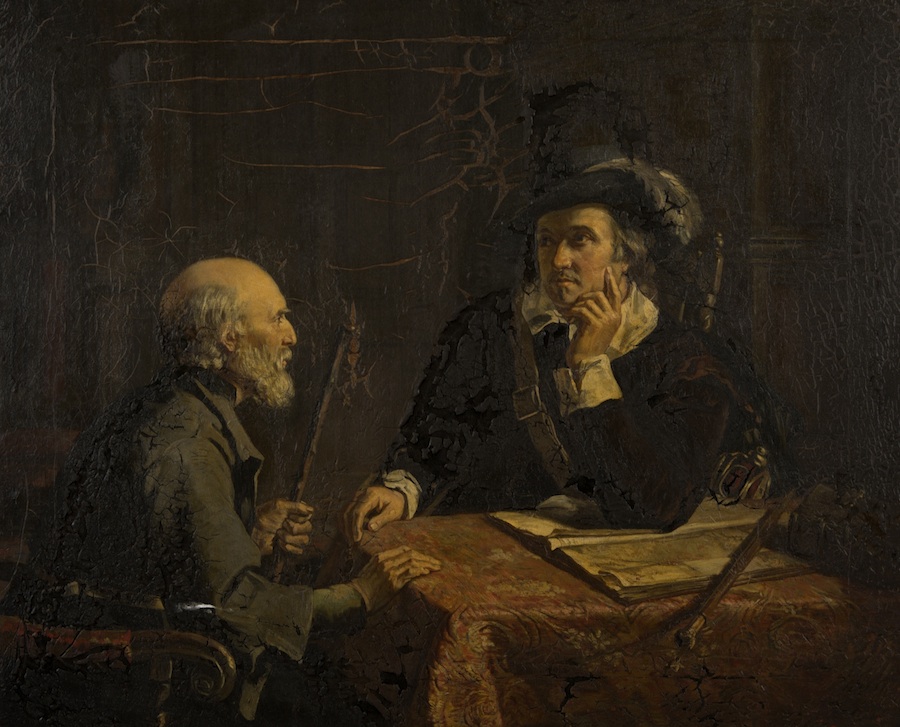Reading: ➢ closet, n. v. Oxford English Dictionary
We also explore the use of the word as a general metaphor for privacy and seclusion. Some of these metaphors are negatively charged: closet as a marker of “mere theories as opposed to practical measures” (1c) or of painful, shameful secrets, including, especially since the late 1960s, secrets about one’s sexuality (3c, 3d, and 10b). Other metaphors are more neutral: closet as an analogy for a hidden interior site—”the Closet of your Conscience” (6b)—or as an adjective that qualifies a particular experience or thing as inward—”closet-sins” as opposed to “stage-sins” (10a). It is not surprising that, as the private room known by this name proliferated in English culture, closet began regularly to be used as a verb meaning “to retreat,” whether alone or—as in the title of Allan-Fraser’s painting (Figure 5)—with another person. With reference to such events as the Glorious Revolution, the lapse of the Print Licensing Act, and the founding of the Royal Society and the Bank of England listed on a timeline (Figure 6), my opening lecture characterizes the long eighteenth century as a period of gradual, uneven transition—from absolutism to constitutional monarchy, a land- to commodity- and money-based economy, from manuscript to print culture, and from a court public to a modern public sphere. Then, turning back to the OED definitions and citations, we consider in which of them the closet seems to encapsulate traditional values, in which of them progressive values, and in which a tension between the two. This collective interpretive work helps to ground a basic thesis of the course: that closets became central to eighteenth-century English discourse and culture because they were such flexible and such evocative spaces. |
The Literature and Culture of the Closet
in the Eighteenth Century
in the Eighteenth Century
Danielle Bobker
|
|


